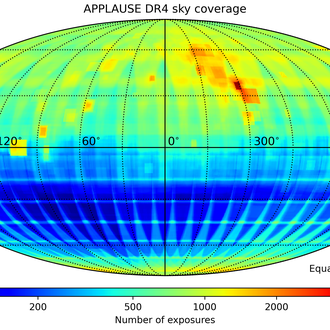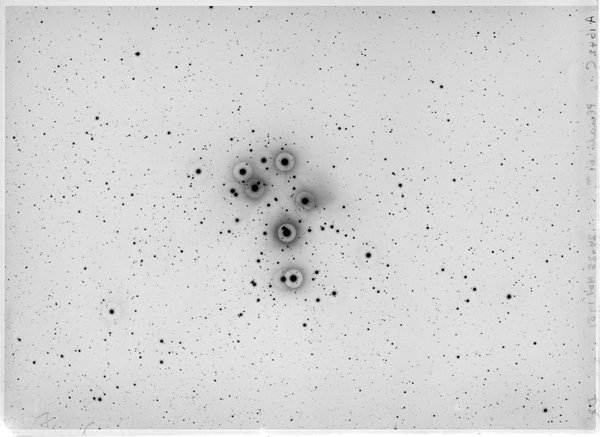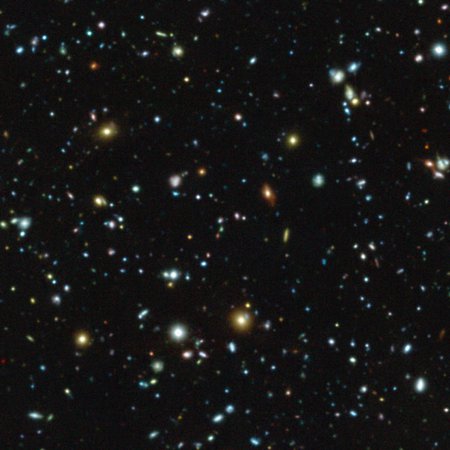Astronomical treasure chest: Digitization project for photographic plates completed

Sky coverage of the APPLAUSE data archive: The colour indicates the number of exposures per sky segment. Especially the northern starry sky is well covered.
Credit: H. Enke (AIP) und T. Tuvikene (Tartu Observatory)The fourth and final data release of the APPLAUSE project offers a total of 94,000 digitized astronomical photographic plates, which were analysed and catalogued using modern methods like machine learning. In addition to scans of plates from Bamberg and the Karl Schwarzschild Observatory near Jena, digitized images from the Vatican Observatory now become available for the first time.
Astronomical photographs are unique – they show stars and other celestial objects at a very specific point in time that will never return. The APPLAUSE project (Archives of Photographic PLates for Astronomical USE) has set an ambitious goal: to scan and analyse the treasures of photographic plates lying dormant in the participating observatories, and to make them available to all interested parties, enriched with additional information.
The consortium responsible for this project consists of researchers from the Leibniz Institute for Astrophysics Potsdam (AIP), the universities of Hamburg and Erlangen-Nuremberg and the Tartu Observatory (Estonia), and has now announced the fourth data publication (DR4) of the APPLAUSE database. This release completes the publication of more than 94,000 photographic astronomical images from 1893 to 1998 from the archives of the partner institutes.
The most important addition is the data of the Bamberg survey of the northern sky, resulting from 17,600 photographic plates taken between 1912 and 1968 by the Dr. Karl Remeis Observatory of the University of Erlangen-Nuremberg in Bamberg. APPLAUSE has thus experienced a substantial expansion of the observational data of the northern hemisphere.
In addition, digitization holdings of the Thuringian State Observatory (TLS) from the archive of the Karl Schwarzschild Observatory near Jena, the former observatory of the Academy of Sciences of the GDR, from the years 1960 to 1998 were made available and integrated into the archive.

This photographic plate from 24 November 1951 from the Vatican Observatory archives shows the Pleiades, a star cluster in the constellation Taurus.
Credit: APPLAUSEThe Vatican State also operates an astronomical observatory at the Pope's summer residence in Castel Gandolfo. Astronomers from this observatory provided digitized data from their archives, which the consortium integrated into APPLAUSE where it became an important part due to the very good quality of the data.
Of crucial importance for astronomical use is an accurate calibration of the digitized data. For this purpose, the researchers developed the open-source programme PyPlate. This software uses machine learning methods for error detection. For example, the detection of artefacts such as scratches and dust grains on the plates could be increased with the new method leading to significantly improved data.
Extensive calibration data from ESA's Gaia space mission, published in December 2020, formed the basis for the comparison with other astronomical catalogues. Almost 4.5 billion light sources were extracted, calibrated and published in DR4. These are now available to researchers worldwide and are part of the data of the international Virtual Observatory. All data are provided with DOI and are published according to the FAIR criteria.
The project received funding from the German Research Foundation from 2012 to 2022 under the topic “Digitalisierung astronomischer Fotoplatten und ihre Integration in das internationale Virtual Observatory” (“Digitization of astronomical photographic plates and their integration into the International Virtual Observatory”) and was supported by the three German partner institutions with substantial own funds. DR4 brings it to a successful conclusion. The plate archive is made available and published by the AIP.
Further information
Data access
https://www.plate-archive.org/applause/
https://public.aip.de/historical-sky/en/
Further information on previous data releases
https://idw-online.de/en/news524339 (FAU 2013)
https://www.aip.de/en/news/historical-star-data-digitally-available/ (2018)
Images
Sky coverage of the APPLAUSE data archive: The colour indicates the number of exposures per sky segment. Especially the northern starry sky is well covered.
Big screen size [1000 x 576, 480 KB]
Original size [3000 x 1729, 710 KB]
This photographic plate from 24 November 1951 from the Vatican Observatory archives shows the Pleiades, a star cluster in the constellation Taurus.
Big screen size [1000 x 728, 100 KB]
Original size [1392 x 1014, 200 KB]




